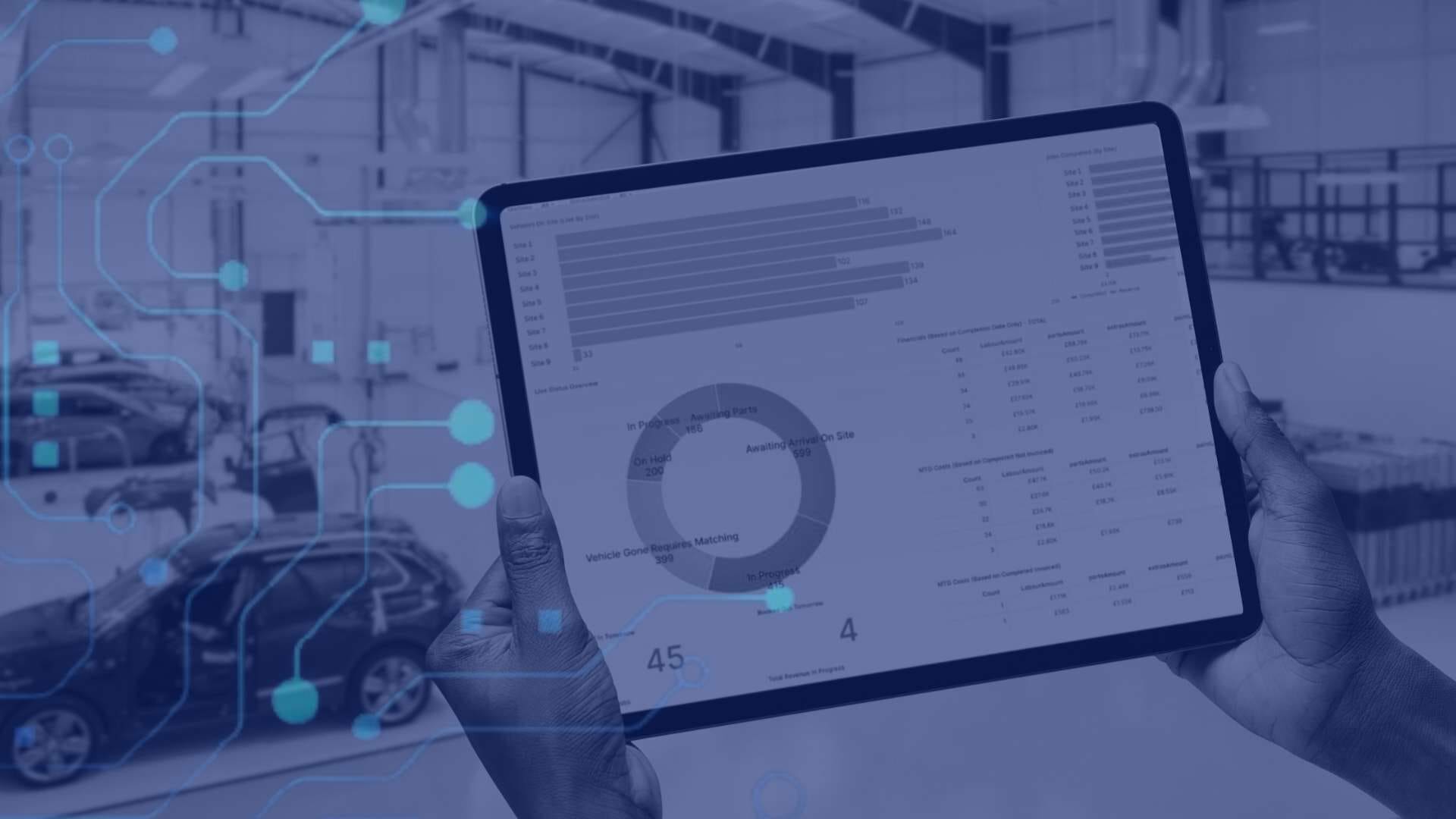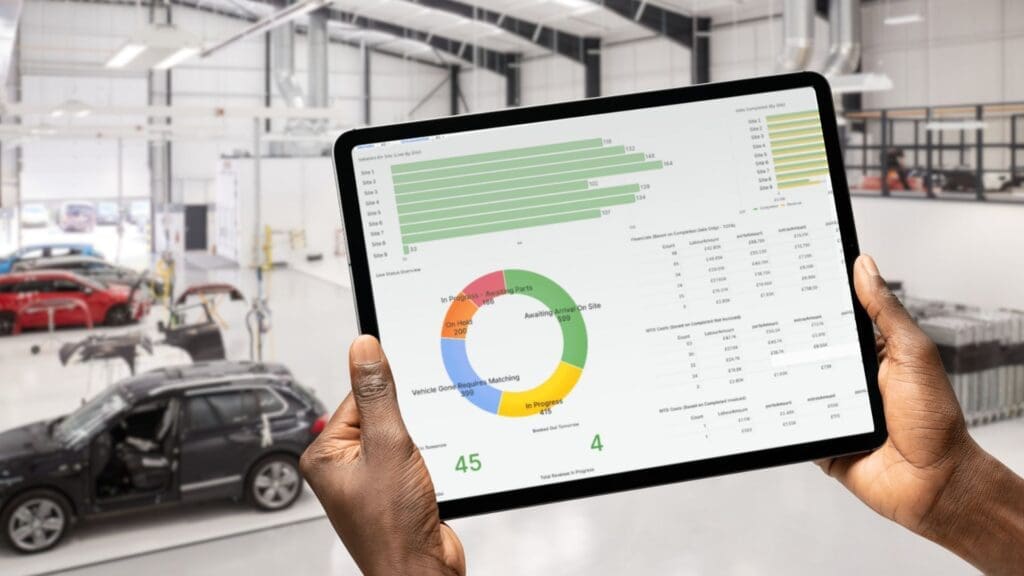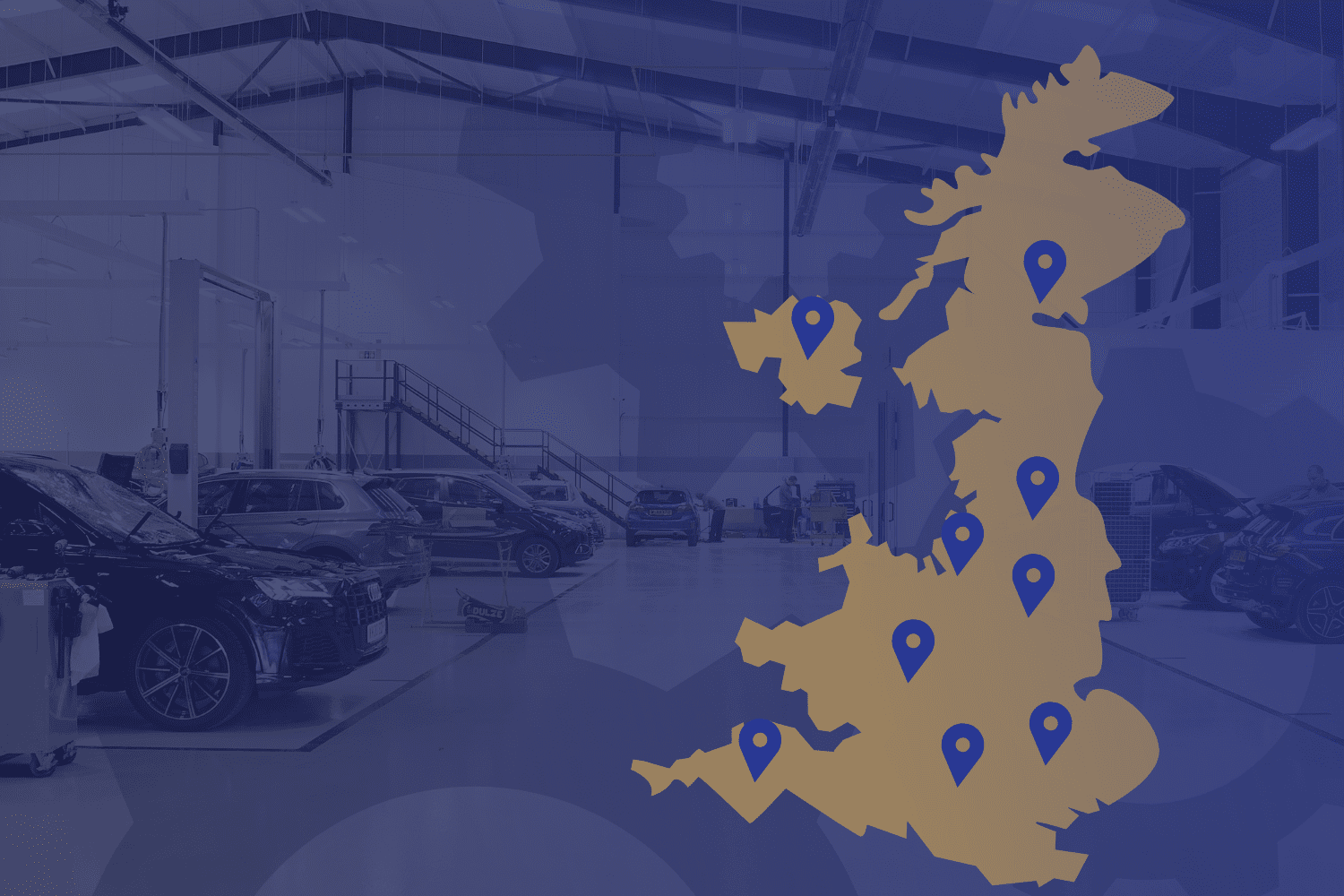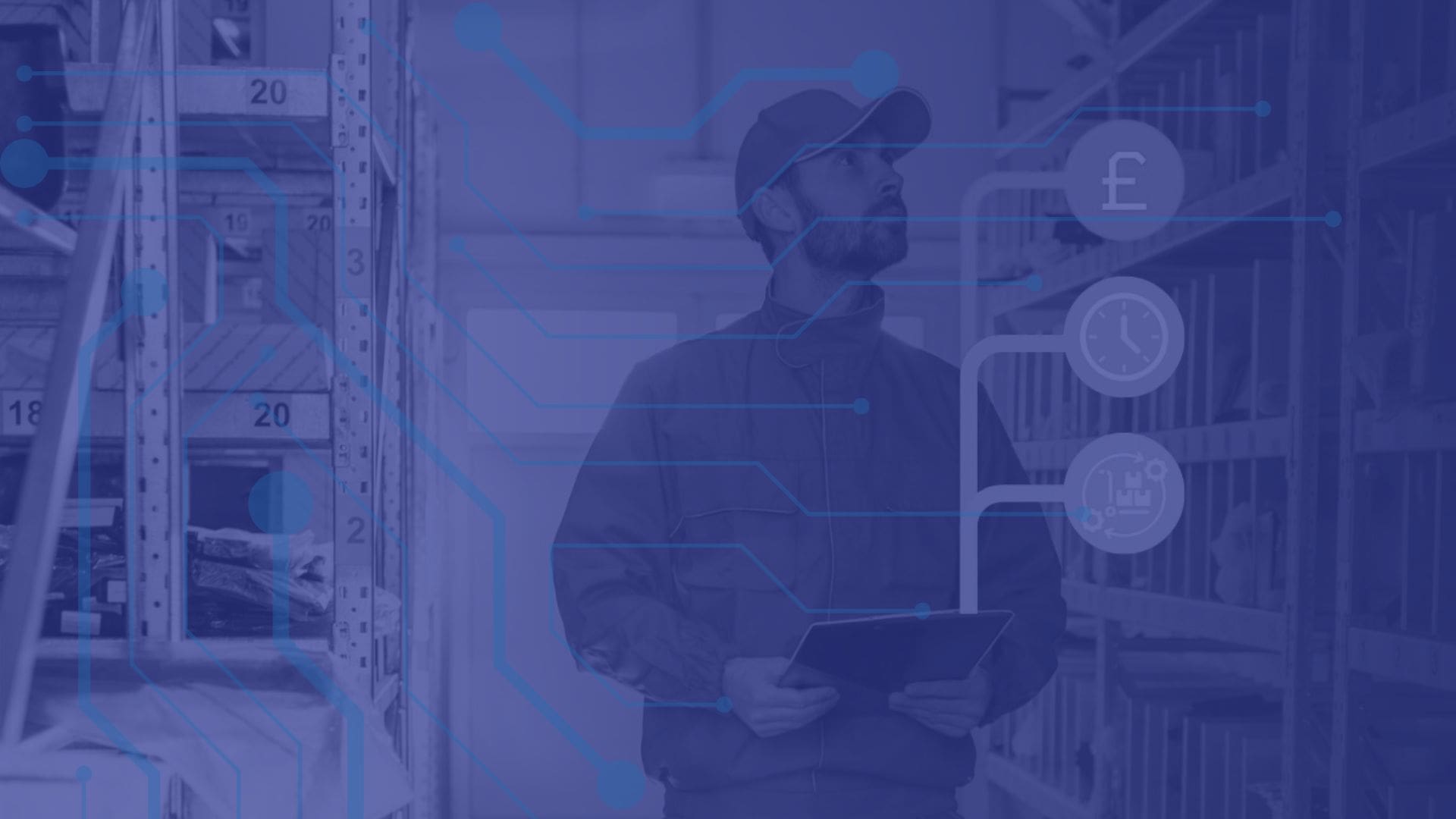
Rethinking Bodyshop Management Systems: A Strategic Shift for Repairers
For auto body repairers, Bodyshop Management Systems (BMS) have traditionally served one distinct purpose: to enable them to receive job allocations through platforms like CAPS.
While this is undoubtedly a critical use case of any solid BMS, and a vital part of running a successful bodyshop, it’s not the full scope of what a truly capable BMS can deliver.
As repair volumes decline, and competition intensifies between bodyshops, repairers must reconsider their approach, and strategically leverage BMS features to drive profitability and efficiency.
In this article, we discuss the shifting priorities for repairers when considering their Bodyshop System, and how new and emerging features can help them achieve a more streamlined, data-driven repair process…
The Changing Landscape of the Automotive Repair Industry
The automotive repair industry is undergoing a significant transformation. The rise of electric vehicles, advanced driver assistance systems (ADAS), and changing consumer behaviours are posing new obstacles, and equally opportunities, for repairers.
Additionally, as the overall volume of repair work declines, many repairers have found themselves becoming more reliant on insurers and accident management companies to secure jobs. However, these partnerships can be a challenge to forge and maintain without a deep understanding of your bodyshop’s operational metrics, requiring repairers to take a new approach to their core systems and processes.
Without a solid, real-time understanding of repair volumes, site performance, and financial metrics, repairers risk further jeapordising their profitability in wake of these challenges.
The Importance of Data-Driven Decision Making

To navigate this complex environment, repairers must develop a keen understanding of their own real-time business performance. Key metrics such as average repair cost, Net Promoter Score (NPS), cycle time, and key-to-key times are crucial for assessing efficiency and customer satisfaction.
Unfortunately, many BMS solutions currently in use by repairers lack the capability to deliver these insights in real-time. Repairers therefore find themselves utilising the BMS solely for job acquisition, and are required to pull retrospective reports manually, from elsewhere, to gain insight over their performance.
This reactive approach can be time-consuming and inefficient, leaving repairers feeling overwhelmed and unsure about their priorities.
Onyx BMS: A Game Changer for Repairers
Recognising the need for a more proactive approach to bodyshop management is why we developed Onyx: a next-generation BMS, designed to empower repairers with actionable insights while streamlining day-to-day operations.
Unlike traditional bodyshop systems, Onyx doesn’t require users to pull manual reports to understand what work needs to be done. It’s underpinned by a robust workflow and task management system, which automatically generates a live ‘to-do’ list for every team member – clearly outlining their tasks and deadlines.
With Onyx, repairers can:
1 – Stay Ahead of Deadlines:
Onyx’s task management system ensures everyone knows what they need to do, and by when, helping to maintain service level agreements (SLAs) without the constant need to dig through reports.
2 – Optimise Operations:
Identify bottlenecks in the repair process, and streamline workflows to reduce cycle times and improve efficiency, all while staying focused on priority tasks.
3 – Enhance Customer Satisfaction:
Onyx helps you harness NPS data to gauge customer experiences and make improvements that drive loyalty and repeat business.
4 – Drive Profitability:
Gain real-time visibility into average repair costs, enabling informed pricing strategies that ensure competitiveness while maintaining healthy margins.
5 – Strategic Decision Making:
Easily view & utilise historical data to forecast trends, allowing for more strategic resource planning and allocation.
The Importance of a Cross-Site View for Vehicle Repair Groups

For repair groups managing multiple locations, it’s imperative to have a centralised, real-time view of core repair data across all sites, and all their repairs in progress. Relying on siloed information can quickly lead to missed opportunities and inefficiencies.
With Onyx, repair groups can consolidate data across all sites, allowing for better resource allocation, performance benchmarking, and strategic oversight.
This unified data approach enables repair groups to identify best practices, standardise processes, and ensure consistency in service delivery. By breaking down these silos, repairers can make informed decisions that enhance overall operational effectiveness, and drive profitability across the entire organisation.
The Benefits of an Open API
In today’s interconnected world, the ability to integrate various software solutions is more crucial than ever. An open API (Application Programming Interface) serves as a vital component of a modern BMS, allowing repairers to connect their system with other tools in their ecosystem seamlessly.
This integration fosters a more efficient workflow, eliminating the need for slow, manual processes that can lead to errors and inefficiencies.
By harnessing a BMS with an open API, repairers can:
Streamline all Core Operations:
Integrate accounting, customer relationship management (CRM), and inventory systems to create a cohesive operational framework that enhances productivity.
Enhance Solution Flexibility:
Choose the best solutions for their unique needs, ensuring that their technology stack is tailored to their specific business requirements.
Accelerate New Tech Implementation:
Quickly adopt new technologies and solutions without the headaches of cumbersome manual integration, allowing for rapid adaptation to market changes.
Maintain a Competitive Edge:
Stay ahead of competitors by leveraging the latest innovations across their operational ecosystem.
Embracing a New Mindset

The shift towards a more comprehensive usage of BMS requires a change in mindset. Repairers must view their management systems not just as tools for job acquisition, but as strategic assets that provide the insights and task management necessary to thrive in a challenging market.
By embracing this new perspective, repairers can move beyond mere survival tactics and instead focus on sustainable growth. In an environment where every job counts, understanding your performance metrics can make all the difference between a thriving bodyshop and one that struggles to keep its doors open.
In Conclusion: Rethinking Bodyshop Management Systems
The automotive repair industry is evolving, and so must the strategies of those who operate within it. Repairers need to think differently about why they choose and use Bodyshop Management Systems. It’s not just about obtaining jobs anymore; it’s about utilising data to make informed decisions, optimise operations, and enhance customer satisfaction.
With Onyx, repairers can harness the power of their data and task management to not only survive but also thrive in an increasingly competitive landscape. It’s time to rethink, retool, and revolutionise the way we manage bodyshops.
Book your free Onyx Demo today to find out how our next-gen BMS can enhance profitability, performance, and insight across your repair business:
Popular Posts
-
Vehicle Repair Network Management: Increase efficiency with multi-site connectivity & insight
Managing a multi-site bodyshop group, or large vehicle repair network, is an increasingly complex task. As vehicle technology advances, supply chains become more diverse, and demand for real-time data intensifies amongst work providers, networks are increasingly in need of more connected, centralised systems and processes. Without real-time oversight of performance and exceptions across your network,…
-
Rethinking Bodyshop Management Systems: A Strategic Shift for Repairers
For auto body repairers, Bodyshop Management Systems (BMS) have traditionally served one distinct purpose: to enable them to receive job allocations through platforms like CAPS. While this is undoubtedly a critical use case of any solid BMS, and a vital part of running a successful bodyshop, it’s not the full scope of what a truly…
-
How to Centralise Parts Procurement in your Bodyshop
Your average auto bodyshop goes through a lot of parts – that’s a given! They typically utilise a range of suppliers to secure the best price and turnaround across different components, vehicle manufacturers, and parts channels. But for many bodyshops, this process can be fairly disjointed; they’re often required to order directly from different suppliers,…



Leave a Reply